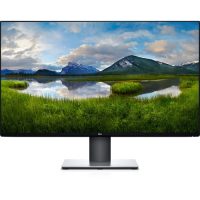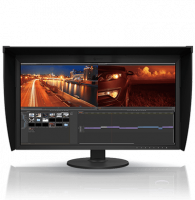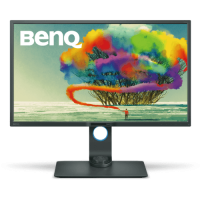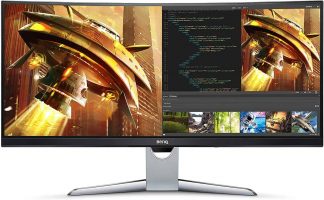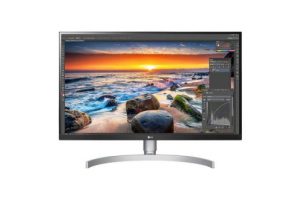Best Monitor for Video Editing in 2021
Get the top performing monitor for your video editing needs
- Last Updated May 25, 2021
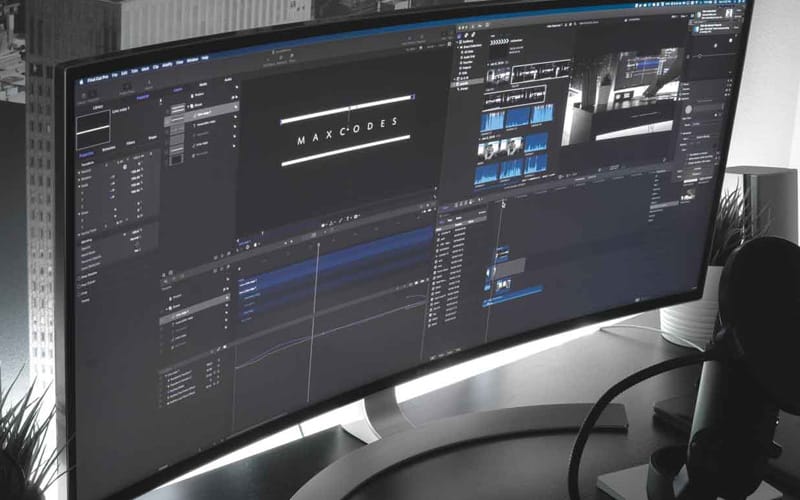
Getting the right monitor is important to have the best working relationship with your computer. This is especially true when you’re video editing. Unlike programming or other materials that you may produce on your computer, videos are intended to be consumed through everybody else’s screens as they watch them. This means that you need to see exactly what your video looks like.
This means getting a good monitor that’s competent so that it can run and display a lot of information on-screen at once, all while having an impressive color display so what is on the screen looks great. This can be a balancing act in the current market for commercial monitors. If you fail to strike that balance, you can finalize videos that don’t look how you’d like them to.
That’s where we come in. On this page, you’ll find five examples of computer monitors that we think are great for video editing. We’ve reviewed each one too, so you know exactly what you’re buying. If you aren’t quite sure what to look for, we’ve got our “Things to Consider” section where you can learn the important specs we talk about here.
Products at a Glance
How We Picked
Before we get into those details, let’s go through how we have chosen these monitors for the sake of transparency. When choosing technology products, you need to take a variety of factors into account.
First, there are the specs. These are easy since you can often draw a straight line between which specs lead to better performance. Put simply, a monitor with better specs is the better monitor. Such specs that we take into account are the monitor’s size, technical details like its response times and refresh rates, and then display specs like the color fidelity and the screen resolution.
Of course, there’s a subjective element here too. Performance isn’t a flat metric that can be measured so easily. It can usually be split into technical performance and color performance. A technical performance will run smoothly with little to no problems whatsoever while color performance focuses on how vivid and pleasing the image presented is.
Both are important but you don’t need to focus so much on color performance if you need a monitor that wrangles spreadsheets like nobody’s business. This means we need to have an understanding of the monitor’s use to determine which products are best. For video editing, you’re going to want a technically capable display that’s also capable of impressive color and image specs, many of which we have gone through at the foot of this page.
Best Monitor for Video Editing in 2021
Full HD with 3840×2160 Ultra HD 4K resolution
In-Plane switching Technology
VESA certified DisplayHDR 400i featuring HDR content playback support
99% sRGB coverage
A large 32” monitor that makes use of a highly detailed 3840×2160 (4K UHD) resolution.
An Ultrasharp monitor that’s calibrated to 99% sRGB coverage the first time you turn it on.
VESA certified with DisplayHDR 400i including content playback support.
Carries a maximum response time of 8ms and a minimum of 5ms.
Can suffer from light bleed when the monitor isn’t showing colored images.
Our top pick is a generously-sized model, the Dell U-Series U3219Q 32” LED-Lit Monitor. This plentiful screen is not only from Dell, a manufacturer that everybody knows and trusts, but it’s one of their higher-end commercial monitors that stretches a full thirty-two inches across, as we’ve stated. For video editing, we find it’s best to have a larger monitor screen so that you can get more information on-screen at once and see your creations in all their glory.
This screen uses Ultra HD 4K resolution for unrivaled detail when producing and viewing videos. If you plan on using the monitor for recreational purposes too, then the great visual detail that 4K has will greatly improve your video-watching and video-gaming experiences. What’s more, this monitor comes out of the box with 99% sRGB color gamut coverage thanks to its Ultrasharp functionality.
Along with that, this monitor is also officially certified by VESA with DisplayHDR 400i capability. DisplayHDR in any form is something that we like to see in our monitors but this is even better when you have video editing planned as it increases peak luminance and the dynamic contrast ratio that the screen displays, all while offering true 8-bit image quality. It also has content playback support to improve the viewing experience, whether you’re watching your own projects back or somebody else’s videos for entertainment.
Viewing video content through this monitor is also helped by the fact that it has a decent grey-to-grey response time. This monitor’s pixels will change anywhere between five and eight milliseconds, the difference between which will hardly be noticed by you, so it’s fast enough to deliver near-instant screen changes during video edits. With a pixel pitch of precisely 0.182 millimeters, they’re also stacked pretty tightly together.
During black screens, you will notice some backlight glow. This can be distracting and is one of those things that may bug you as a consumer, but it won’t have any effect on the performance of the monitor as long as there’s something on-screen when the computer is on.
DCI 4K standard (4096 x 2160)
Covers 99% of the Adobe RGB color space
Digital Uniformity Equalizer (DUE)
CG319X ColorNavigator hardware calibration software
A large 31” monitor that makes use of an impressive 4096×2160 native resolution.
Colors are displayed brighter and more vividly through its wide gamut IPS panel.
Produces 98% of DCI-P3 color gamut standard.
Uses built-in ColorNavigator calibration software to allow for unmatched tinkering.
Lacks many ratings on its webpage.
Our second screen is almost as large as the first but it’s a much more expensive option. Take a look at the specs of the Eizo ColorEdge CG319X 31.1” 4K Monitor and see if it’s worth the extra cash. At thirty-one inches, it’s essentially the size of the other monitors on this list while supporting a superior form of 4K native resolution, the 4096×2160 4K DCI.
Just behind that initial screen, there’s an IPS panel. If you know anything about these panels, it’s that they’re better than VA and TN alternatives when it comes to reporting color and other vivid image details that are great for editing videos and watching them in general. It’s a wide gamut panel too, ensuring color performance is consistent across the area of this large screen. It supports about 98% of the DCI-P3 color gamut standard too, so you get to see virtually every color of the spectrum.
This Eizo ColorEdge has a strong contrast ratio of 1500:1. This means that there’s a massive difference between the darkest black and the lightest white, ensuring that any minute details on the screen are visible when editing. Anything above 1000:1 is considered the best of the best where the contrast ratio is concerned.
Most of the color and image quality specs can also be altered through the use of ColorEdge’s own ColorNavigator software. This software is directly built with and tied to the hardware of the display, allowing you to change settings and get the exact results you want. If you’re a pro who may want to experiment and find the perfect, maybe unconventional, visual style for you, this is the most ideal product we’ve found.
1.07 billion display colors
3840×2160 resolution
60 Hz refresh rate
Anti-Glare display
A 32” monitor with 4K UHD (3840×2160) resolution, offering visual clarity.
KVM Switch-compatible, allowing you to connect two computers on a single screen to manage project files.
AQColor tech covers RGB, sRGB, and Rec. 709 color gamut standards.
Ships with a firmware update that fixes known flickering issues.
Some haven’t shipped with the USB cable that’s supposed to come with it.
Next up is another 32” monitor, this time by a more obscure Taiwanese consumer electronics company called BenQ. We’re recommending the BenQ PD3200U 32” 4K Monitor, which uses the lesser 3840×2160 UHD 4K, which is nothing to turn away from but still less powerful than the previous monitor. 4K UHD still offers great visual clarity and detail that many other monitors can only hope to achieve.
KVM Switch, standing for Keyboard Video Mouse Switch, enables this monitor to show the files of two different computer machines on the same screen. If you have two devices, or you work with a partner and need access to their files, this monitor can make working on projects much easier by organizing the files of two machines on one screen.
As for this model’s color performance, it has extensive coverage of RGB, RGB’s sRGB variant, and also the Rec. 709 color gamut standard. This means colors presented on this monitor will pop and look more vivid while you’re editing or watching videos.
This monitor also makes use of smart features like Brightness Intelligence and ZeroFlicker technology. Brightness Intelligence does exactly what it sounds like, a tech that regulates brightness and avoids displaying blue light during. Blue light causes eye irritation, especially during prolonged video editing sessions. ZeroFlicker minimizes screen issues and is even capable of accepting firmware updates to fix known issues as they come up, ensuring your purchase is protected into the future.
Ultrawide 35″
3440×1440 resolution
HDMI, DisplayPort, USB 3. 1
The largest monitor here at a full 34”, at a resolution of 3440×1440 across a curved screen.
Brightness Intelligence Plus tech manages color temperature and blue light quantities to combat eye strain.
Runs with AMD FreeSync, ensuring that smooth performance with no screen tearing occurs.
The ergonomic adjustable stand can both tilt and raise for the perfect editing setup.
TN panels increase the risk of ghosting and small but noticeable motion blur.
If you liked the look of the above BenQ model but wanted a bit more real estate, you should check out the BenQ EX3501R 34” Ultrawide Curved Gaming Monitor. It’s all in the title, it’s thirty-four inches while also being curved, so the extra inches don’t add too much to the size of the monitor and allow this larger model to slip neatly into any old desktop workspace. It has a 2K monitor, not the best but the additional screen space more than makes up for the drop in pixel count.
As was the case with the above BenQ monitor product, the Brightness Intelligence functionality is back. This time it’s Brightness Intelligence Plus, which proves even more adept at managing color temperature and minimizing blue light exposure so that your eyes don’t get strained after spending a long time editing.
With larger screens like this, ensuring that they don’t tear when a lot of movement is occurring on-screen is important. Fortunately, this larger BenQ model is compatible with AMD’s FreeSync, synchronizing screen activity so that image performance remains smooth and the screen doesn’t tear, both horizontally and vertically.
The physical construction of this hefty monitor also has some cool features, the most pertinent being an ergonomic stand that can tilt and raise the screen to your level. This allows you to find the perfect monitor positioning for your unique desktop setups, increasing the chance that this will be the model for you.
27″ UHD (3840 x 2160) IPS Display
VESA DisplayHDR 400
sRGB 99% Color Gamut
3-Side Virtually Borderless Display
A 27” 4K UHD IPS panel monitor that’s ideal for a smaller workhorse model.
VESA DisplayHDR 400 certified, guaranteeing 8-bit fidelity and consistent color brightness.
Detailed sRGB color gamut with 99% coverage.
Has thin-bezel edges and a pivoting ergonomic stand.
Runs off one USB-C cable but its power output is low.
To finish, we have a smaller, average-sized monitor in the LG 27UL850-W 27” 4K UHD Display. It may be the smallest on this list but this 3840×2160 resolution monitor model is capable of powerful entry-level 4K imaging, all for a reasonable price tag from a company that many electronics consumers have confidence in. This model also uses an IPS panel, so it’s more suited to reporting bright and color contrasted visuals.
VESA has certified this monitor as having DisplayHDR 400 capabilities too. 400 is one of the standard HDR capabilities but is impressive nonetheless, improving peak luminance on-screen and ensuring 8-bit image quality.
Between the fact that this monitor is built with an IPS panel at its core and its DisplayHDR certified, the 27UL850-W uses an sRGB color gamut and achieves an impressive 99% coverage across the visible light spectrum.
This monitor is also capable of pivoting or tilting thanks to its adjustable stand. What this monitor has that others don’t, however, is its ultra-thin bezel edges that ensure you get as much screen real estate as physically possible.
Things To Consider
Our Verdict
Full HD with 3840×2160 Ultra HD 4K resolution
In-Plane switching Technology
VESA certified DisplayHDR 400i featuring HDR content playback support
99% sRGB coverage
You’ll find that all of the above monitors have a lot in common. For example, most are constructed with IPS panels over any other type as they improve color performance, and most of them are some form of 4K too. Where exceptions lie, like the BenQ EX3501R, they have a little something different in the form of the largest screen.
Ultimately, our ranking takes into account cost along with how advanced the specs are. On paper, the specs of the Eizo ColorEdge are superior to the Dell U-Series at number one, but the ColorEdge is far beyond the reasonable budget of the average consumer, hence its place at number two. Conversely, you get a lot of great specs that are ideal for video editing for a great price with that Dell U-Series.
If you have the cash and can buy monitors for the absolute best specs then do that, but otherwise, you should take into account how much each purchase will cost you and weigh that against the specs on display.

